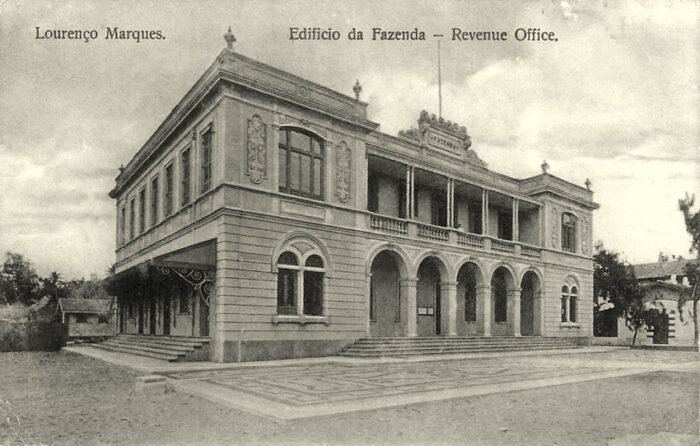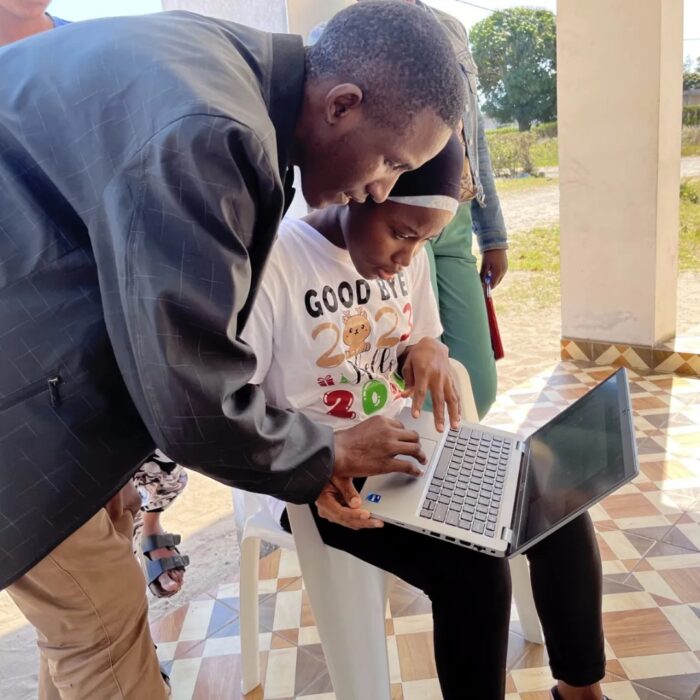
Mozambican artist Suzy Bila has been living in Portugal for over 20 years and paints the multifaceted landscapes of her world, from the narratives and inspirations that stem from her origins to the complex and metamorphosed universe. Her relationship with art has always been one of seeking to understand humanity and how creative processes can be a factor in socialisation, inclusion and understanding of others. In this quest, she became an educator and researcher, giving a social value to art that is rarely recognised. In this interview, she tells us about her work in the three fields that she doesn't try to divide, but rather to make them into a body that simplifies and brings practices that can solve concrete problems that the "system" proves incapable of solving. Let's find out what this is all about through the questions and answers below.
Mozavibe: It was in Noel Langa's studio that you revealed and perfected your artistic talent. How did this total eclipse of art come about that changed your life and defined what we know and see today?
Suzy Bila (SB): In 1993, I met Noel Langa, an artist who lived in the Indigenous neighbourhood, opposite the teacher training school. Noel was painting in his backyard, and I looked at him without him realising I was there. A man of great humanity with a different outlook on education, he welcomed young people into his studio for artistic exploration. It was here that I began to explore watercolour, gouache and had the privilege of sharing constructive moments with renowned artists such as Malangantana, sculptors like Alberto Chissano, Samate, Víctor Sousa, Zaqueu...
Noel provided materials only for use in the studio. My need for continuity in the creative process led me to use cooking spices from home. In the second year of attending the workshop, Noel organised a group exhibition of all the young people, inviting our parents to attend the opening. That same year, we took part as volunteer monitors in the "Circus of Peace", a project between UNICEF, Ateliê Arco-íris and the National School of Visual Arts, with actress Ana Magia, musician Chico António, among others. Most of the young people were future teachers and recent Visual Arts graduates. This sharing allowed us to acquire new tools and a new perspective on art education that was different from what was taught in official schools. The training of monitors brought new methodologies that allowed us to reflect on the nature of the act of creating and the conditions in which it can occur and how it can be constructively developed.
M: You left for Portugal in 1996, already an artist. Tell us about arriving in another country, other landscapes. What were your first impressions?
SB: When I arrived in Portugal I came to a city in metamorphosis, with an intensity of experiences and involvement in exhibitions, workshops, biennials, art competitions... The city of Maputo had opened its doors to women artists, and I was one of those few who broke new ground in territories dressed by men. In Lisbon I felt isolated, there wasn't as much Mozambicanness as there is now. For a while I felt very nostalgic. The culture shock was very visible in the way I was treated and in the exuberance of power. Everyone wanted to teach me how to be and to be as if everything that made me a woman wasn't important.
I felt there was a need for them to show that they were the reason and the truth in the arts, which artists could only cipher within parameters that were strictly created by a group of laypeople who symbolised Portuguese art. I tried to build my work silently and by demanding more and more of myself. I've always had a strong urge to constantly flee from places where I felt like an extra, where some made a point of claiming "us and them". The artistic environment was an arena in which artists from African countries ended up giving up.
M: And what did you work on when you arrived in Portugal?
SB: My first job was in a foster home where the experience and lack of artistic space in these places challenged me to continually invest in intervention methodologies through art. I went on to do a degree in Education and a master's in which I wrote articles about integrating art into my practice in early childhood.
When I joined a Family Intervention and Empowerment Team at the Santa Casa da Misericórdia de Lisboa (SCML), I was coming from a background of working with children aged 0 to 6. My first observation of the work done by social workers and psychologists in their relationship with families highlighted the organisation of complex family life situations. When we focus on neglect, we enter the world of unpredictability, where we are confronted with a chaotic world in which we endeavour to give it coherence. Bearing in mind that an individual influences the conditioning of society and the sequence of their history over time, in the same way that they are conditioned by society and its historical process, there was an urgent need to create sustainable projects that would challenge us to change the way we intervene with children and young people, with an eye to the temporality of the intervention. We need to look at the different dimensions and perspectives, so that criticality can allow us to provide constructive responses and paths that are coherent with the needs and cultural peculiarities of each family.
M: This statement you made in an interview left me in awe: "Looking back, I see a symbiotic relationship between nourishing the soul and ending hunger". Would you like to comment on those words?
SB: My art doesn't belong to an "institutionalised" definition, I live in multifaceted territories. The places where art processes in my artistic journey have always been related to the space occupied by women in everyday family life and in our social context.
When I started painting in Noel Langa's studio, the materials he provided (watercolours, paper, brushes) stayed in the studio. My need for continuity led me to discover or experiment with other natural materials in "my mother's kitchen", spices (spoon, curry, coffee, plants) that allowed me to create colours that watercolour couldn't give me. Years later, when I arrived in Portugal, I lived in Campo do Ourique, the place where my first film was born, in 1997. I knew almost nobody, my life was reduced to looking after my film and creating my pieces on the kitchen walls. This situation happened again in 1999 when I met Eurico Gonçalves, who was surprised to see the small place in the kitchen where I had painted the huge pieces. I was in the kitchen with him, describing the whole process. Eurico laughed authentically, a special person whom I treasure. I feel that the kitchen space is symbiotically related to my creative process. Nowadays, the kitchen is where I create my ceramic pieces. I feel good in this place. I'm not an excellent cook, but I'm organised and I feel a sense of belonging.

M: How did you find your place in the art world?
SB: Technological evolution has turned out to be the best way of relating to the world, where I've projected myself to all corners of the globe. I've learned to create websites, blogs and manipulate social networks in favour of what interests me in the art world. Entering the market with galleries, collectors and curators who embrace the contemporary art paradigm happens gradually, with the right people. Opportunities to share my work arose and everything went along as it is now.
M: Meanwhile, beyond the paintbrushes, you're an educator and researcher. What is this work essentially about and what problems are you trying to answer?
SB: Now as an artist educator and researcher, I constantly question my role. When I'm in a social intervention context, I don't try to train artists, I metamorphose into the community, listening to the voice and intrinsic needs of those who use it, generating multiplicities and agency. In every movement, from singing to dramatisation, I try to create maps that allow them to be among the different discoveries, creating fluidity between the interests of developing identity and authenticity. This movement, lived, is permanently in everyday life, resulting from each person's particular expression, which we can find in pedagogies against the system and which are concerned with disruption and prejudice.
Artistic education goes through processes that take into account this lived movement, the different profiles and reflections and their meanings. It seeks to understand the desire for encounter, the articulation of resources and the management of inherent feelings, generating processes of mutual belonging. We appeal to specific discourses, practices and desires that establish a critical and reflective structure, which live on in our descriptions of the contexts where each process was possible (from the living space, the different places explored, metro journeys, cafés, museums, joint workshops...). We seek to appropriate particles of each other's narratives in a new relationship as the author of a new discourse that seeks to articulate with the discourse that exists in the world.
This is what I dream of for our Mozambique, an education that responds to the problems of our children and young people. Because they have their own problems that need to be addressed according to their specific needs.

M: Looking at your work, I always see the words "metamorphosis" and "introspection". The feeling of a constant search for the depth of things. What is this place where Suzy searches for representations?
SB: I like building paths, living unique experiences with people, creators or not... I like to learn every day... Luck is also sought, or not... perhaps work creates its own path. I'm an active woman who works in the context of social intervention, where I deal with different cultures. And in these places I realise the difficulties of being a foreigner.
Many people look at me with admiration and even say to me personally that in those moments everything makes sense, the impact of our role with each other.
M: There are more and more Mozambican artists emerging and with ambitions to expose themselves to the world. There are even those who have already taken part in international exhibitions. Is there a space for our art in the different territories? What challenges are there to position Mozambican artists globally, based on their experience?
SB: As long as the West has a monopoly on the aesthetic definition of art, it will be difficult for us to find a place. But when we discover this place, we realise the importance of Africa in contemporary art. In my work I've always sought the plurality of personal experiences, I've always made the idea of a generalised Africa and a discourse of practices that imprison my thinking the reason for my strength, the main vector for change and the search for my own expression.
M: You told us that you dream of an "education that responds to the problems of our children and young people" for Mozambique. Can you now explain what guides this dream and what it would consist of?
SB: The risk and danger that moulds our daily culture in Mozambique doesn't have many answers. It's normal to see children selling or living on the streets. I grew up seeing and hearing the word "Molwene". When will there be legislation and specific official programmes to respond to the situation of street children?
In Portugal, I am a technician who works with children and young people at risk and in danger, and I challenge myself to new experiences and new meanings that invoke the need to investigate new perspectives and a new practice that could one day support our Mozambique. It has become essential to reflect on the fundamental issues of education, and art can provide tools to better understand the problems of our "Molwenes" and social practices and policies such as multiculturalism, inclusion, opening up possibilities to reflect on the idea of learning from communities and their dynamics.
It was in this complexity of circumstances that my research became pertinent, not only because of the personal motivation of being able to unite three professions - researcher/artist/educator. But with the idea of investigating the nature of the creative act, the conditions in which it can occur and the way in which it can be constructively developed, deconstructing processes inherent in intervention models with children and young people in situations of risk and danger, using the a/r/tographic research method because it has deep links with action research and intervention. It reflects a living practice in which teachers' and artists' own practices become research sites/environments.
It was crucial to participate in the process of changing the dynamics within the educational community of the country that saw me born, and to intervene as a mediator by creating spaces of complementarity, where we can build practices that lead us to idealise new environments that don't focus on informative teaching, but allow children and young people a time to incorporate what they experience in their usual life contexts through artistic languages.
By Eduardo Quive







